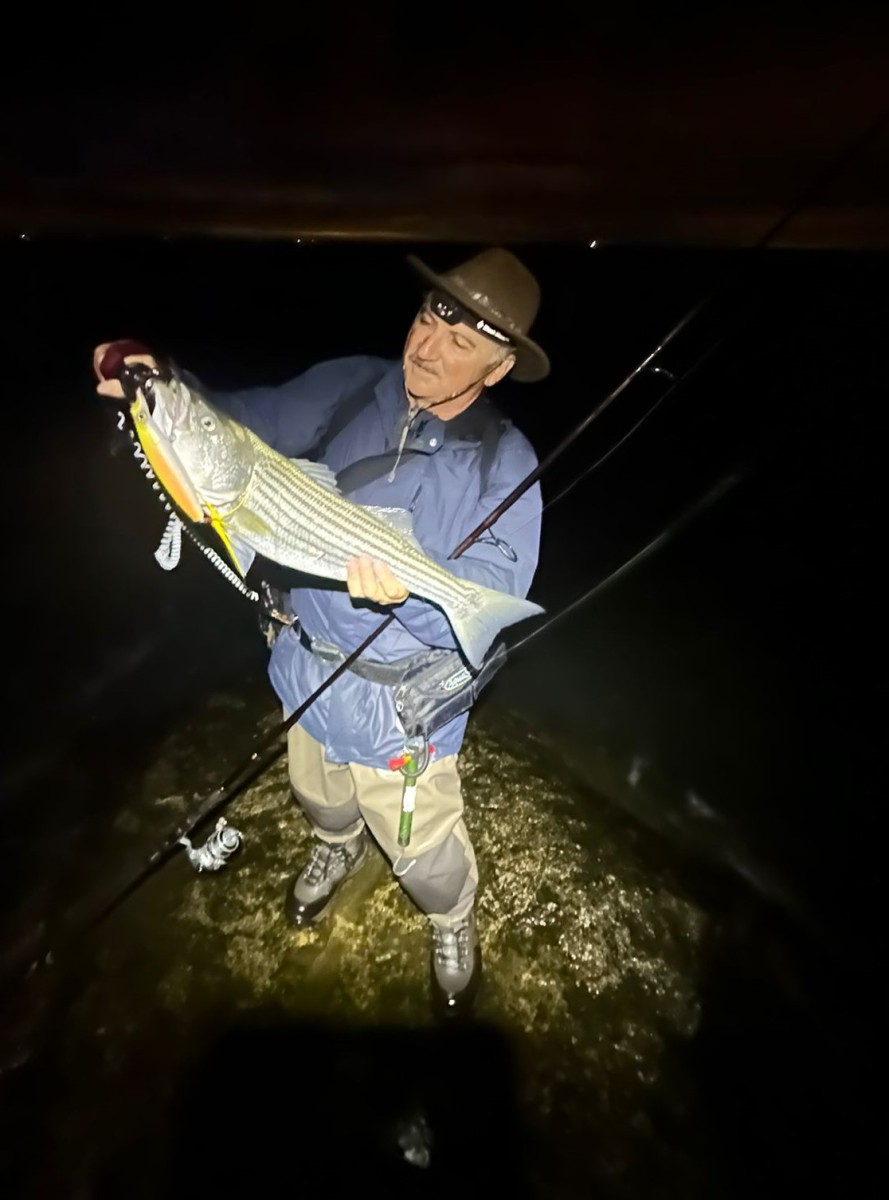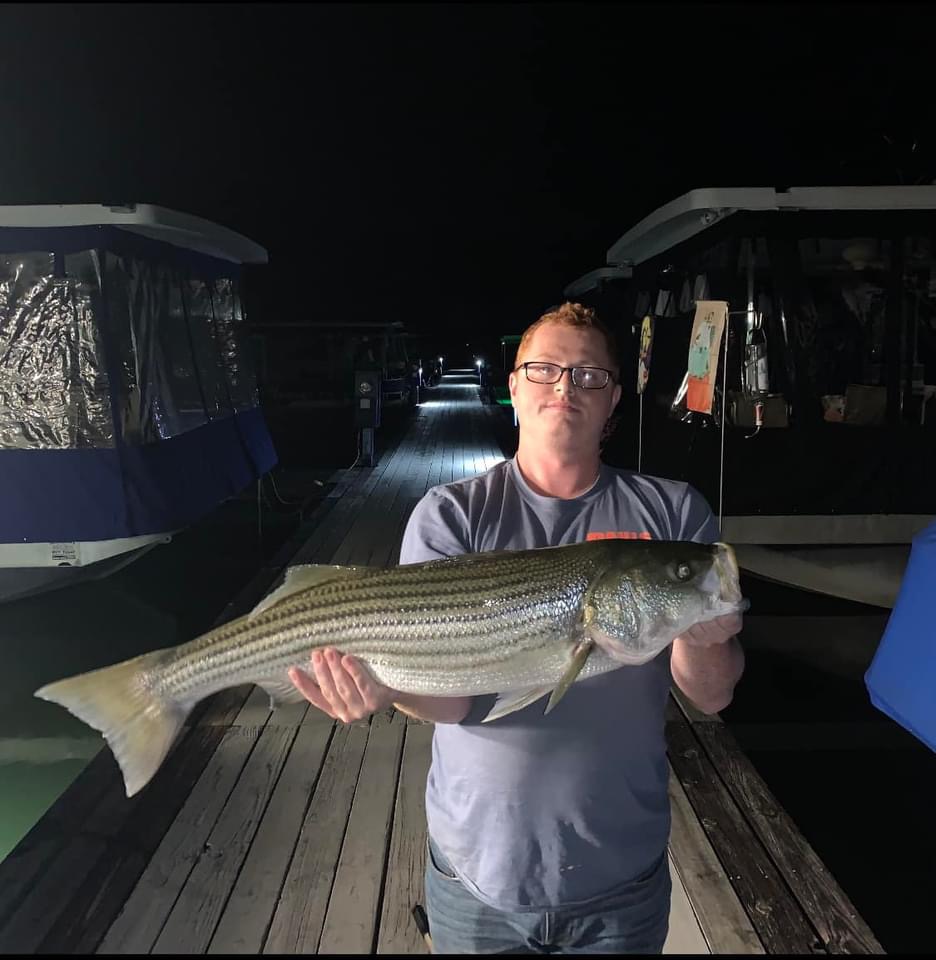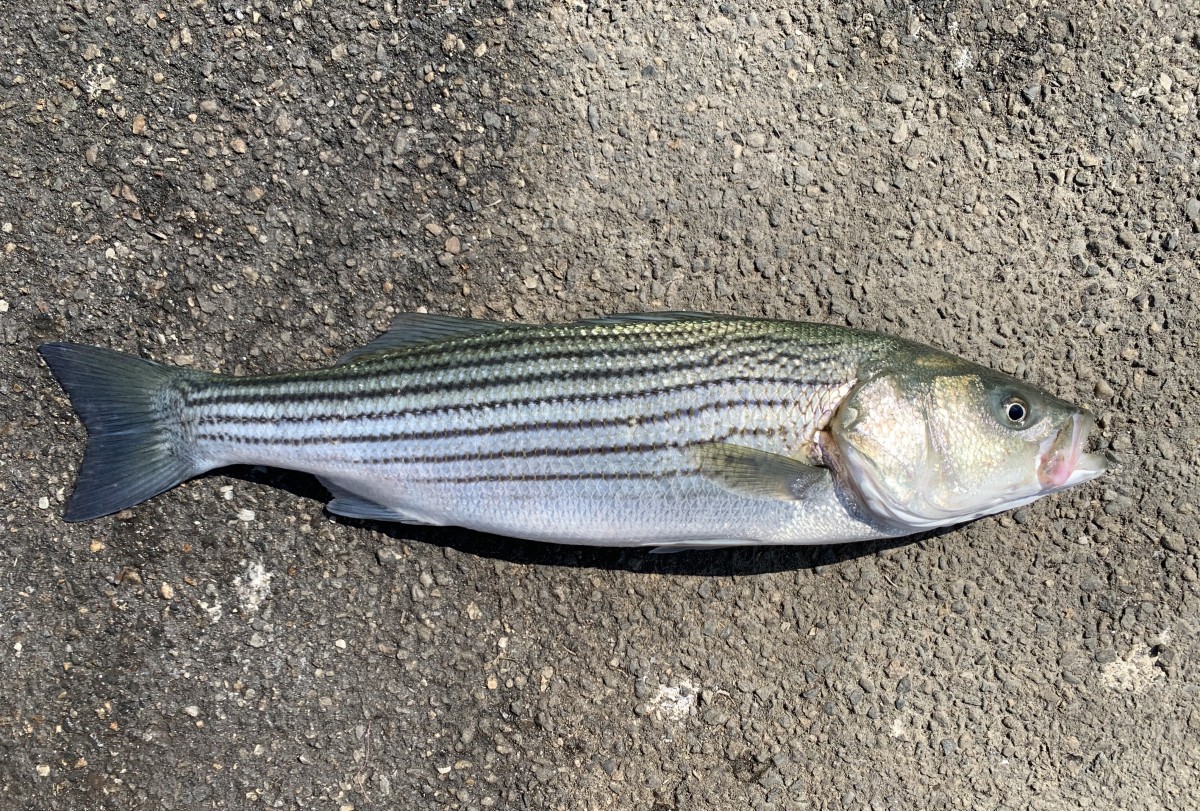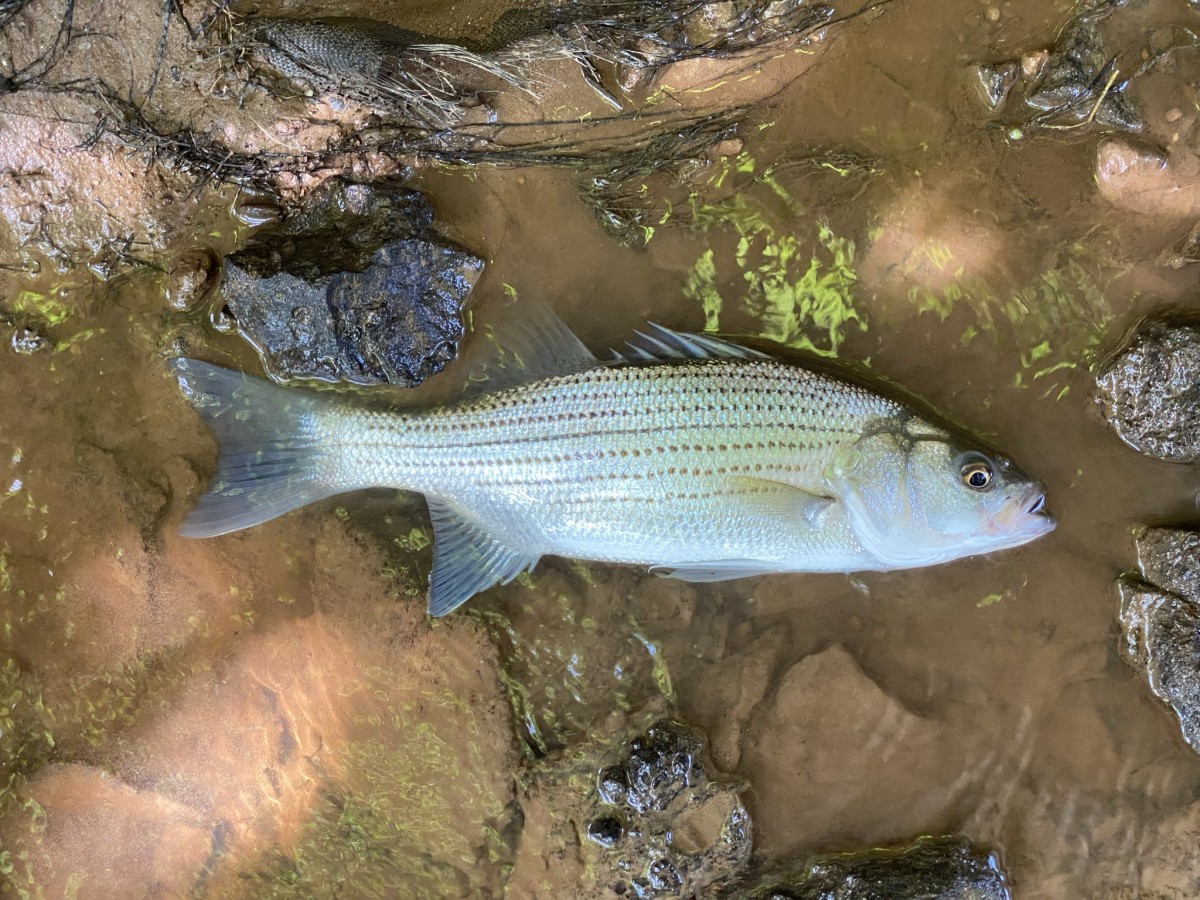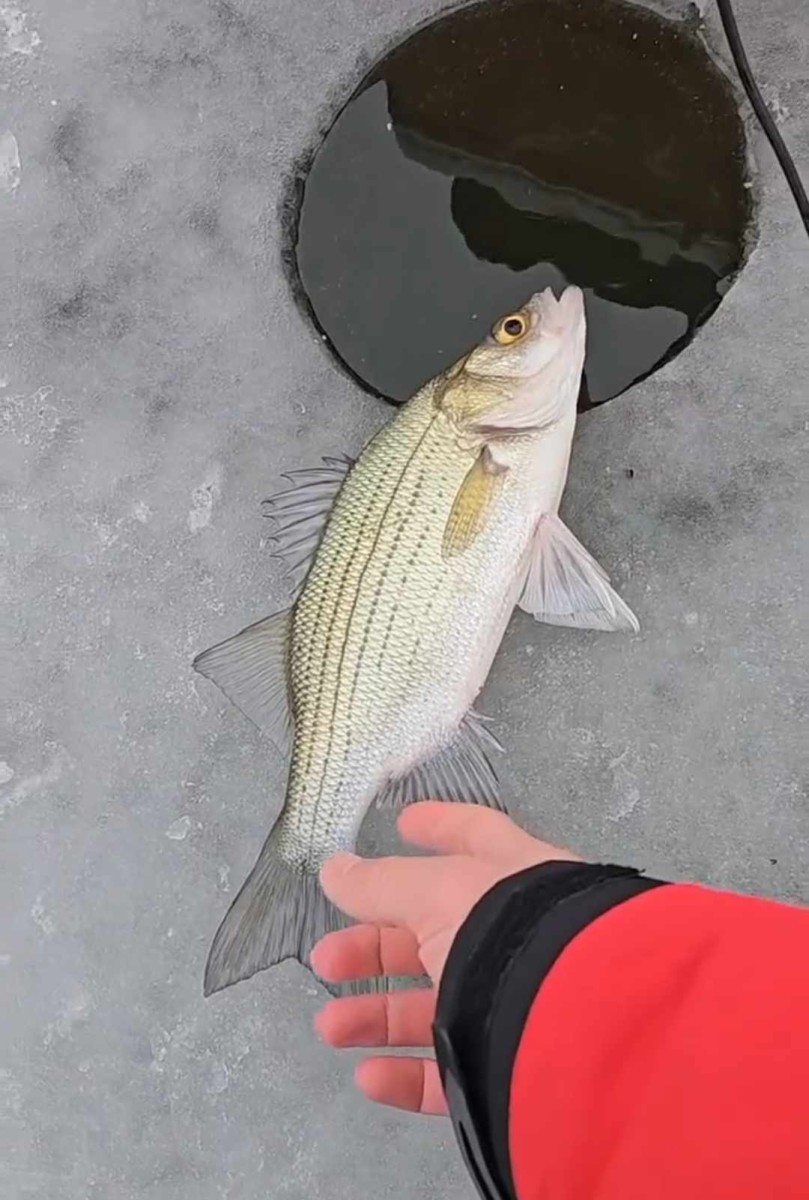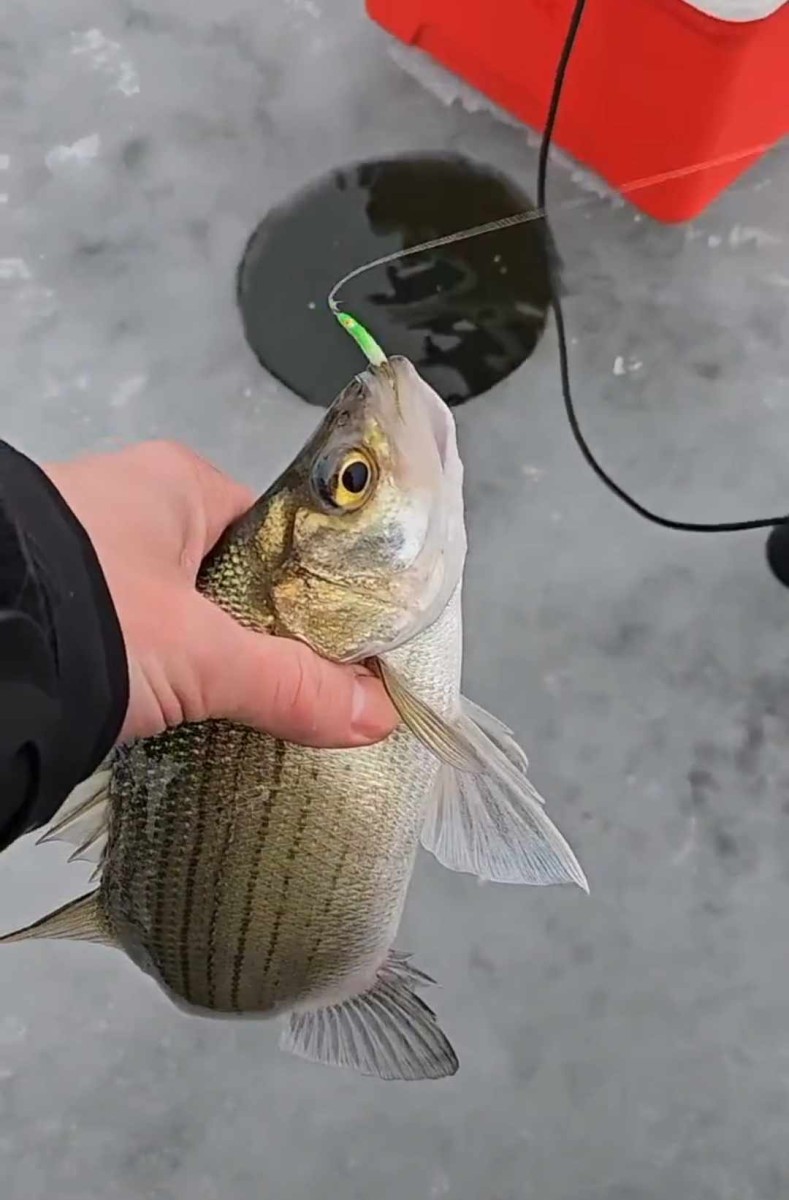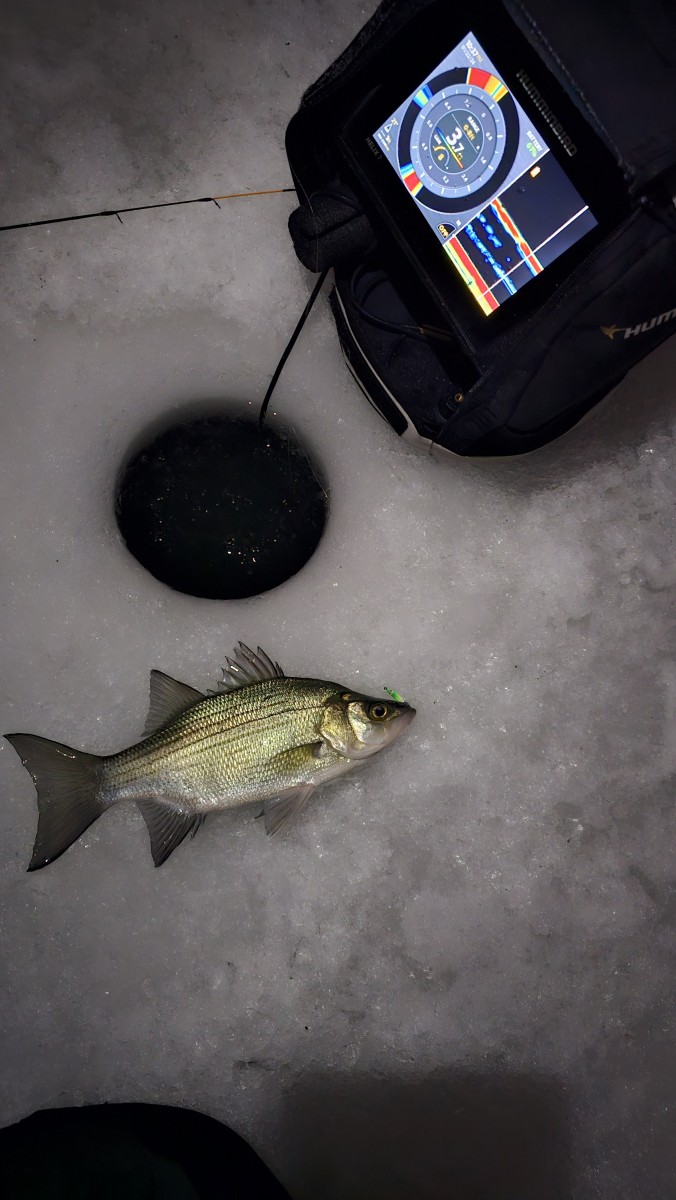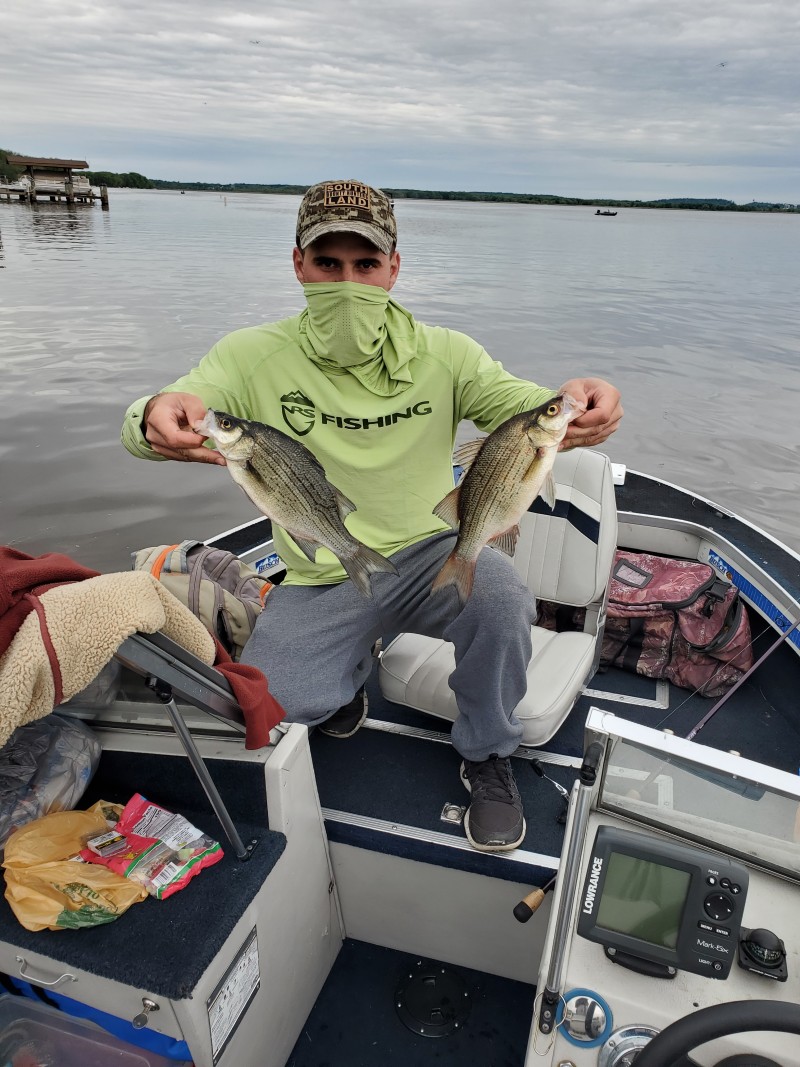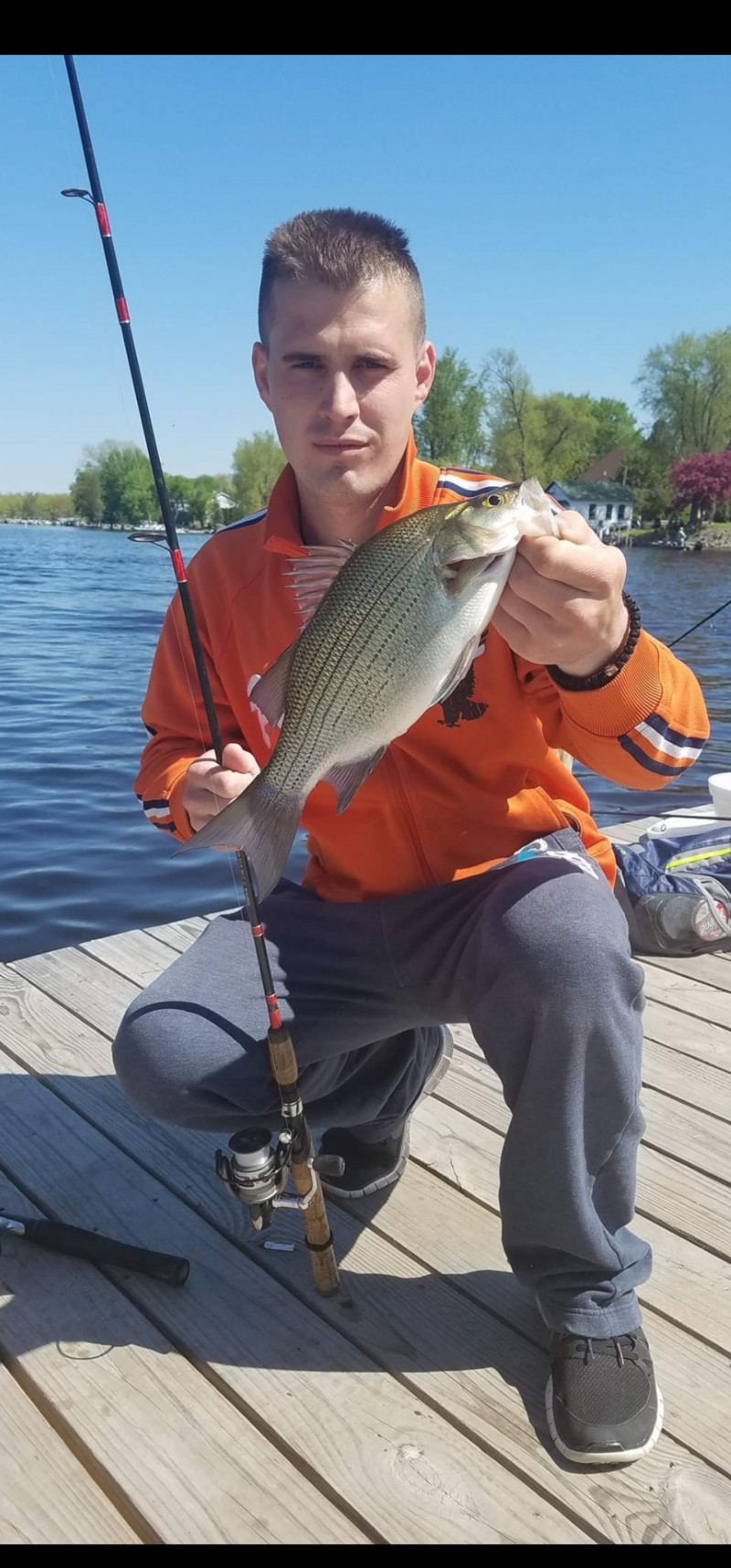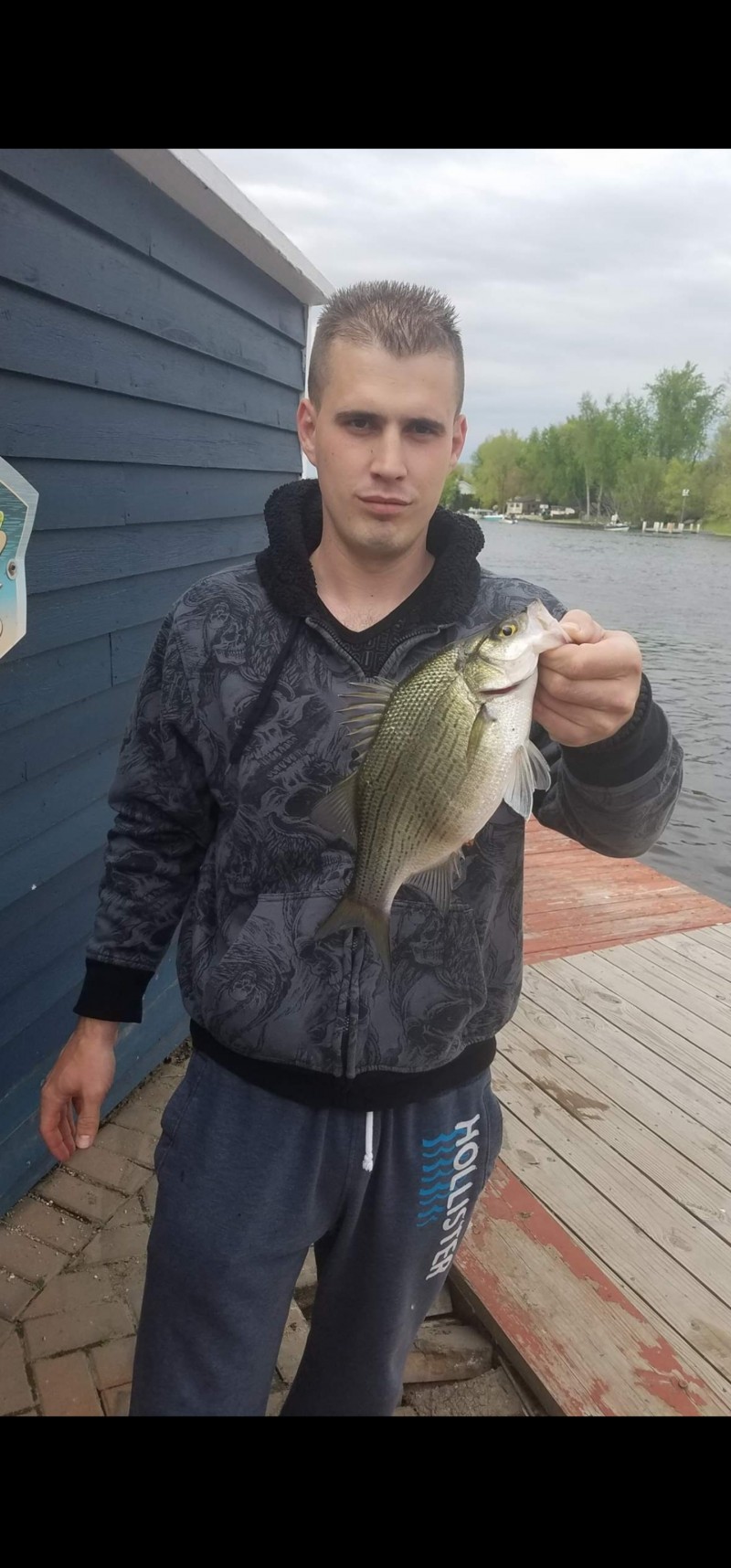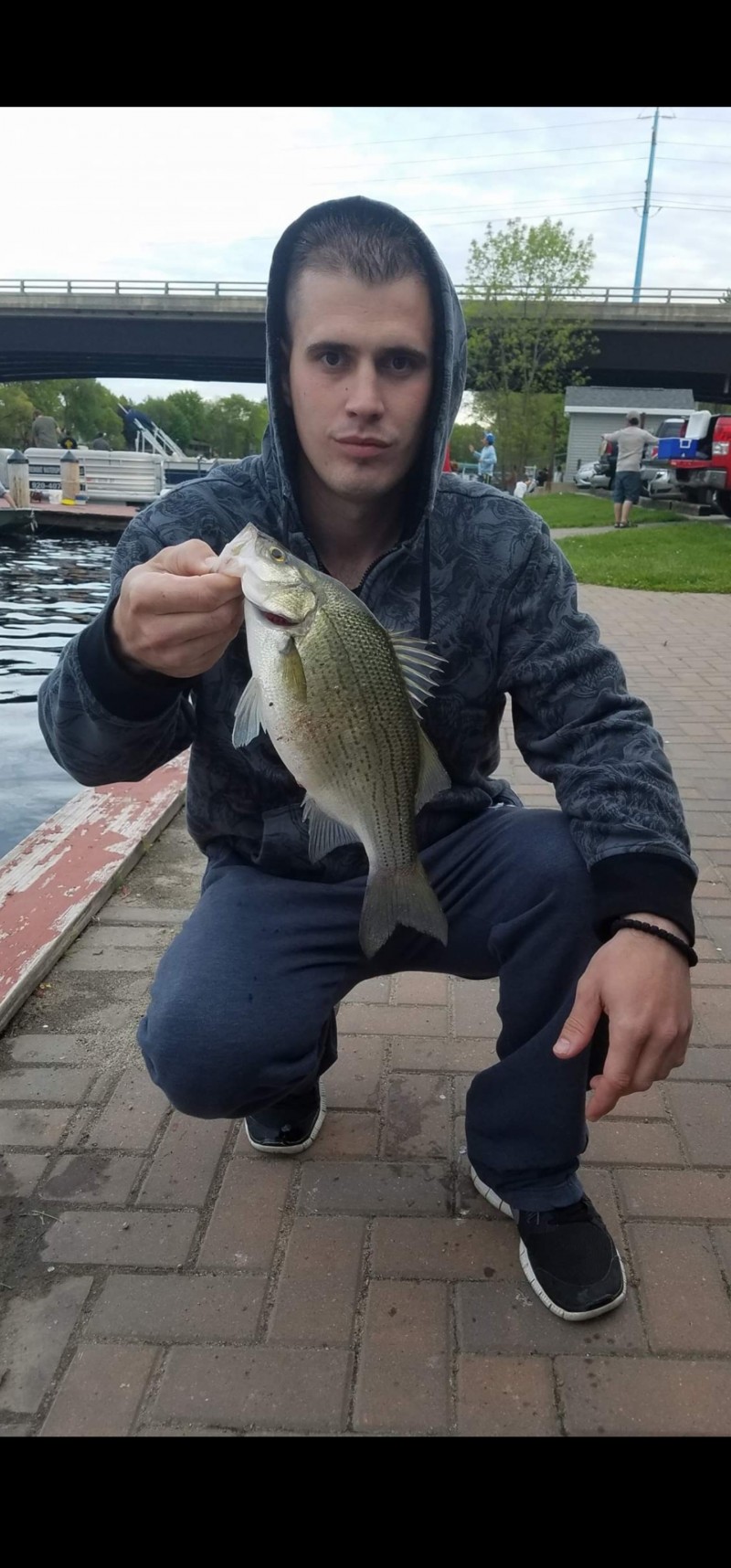Striped bass
(Morone saxatilis)
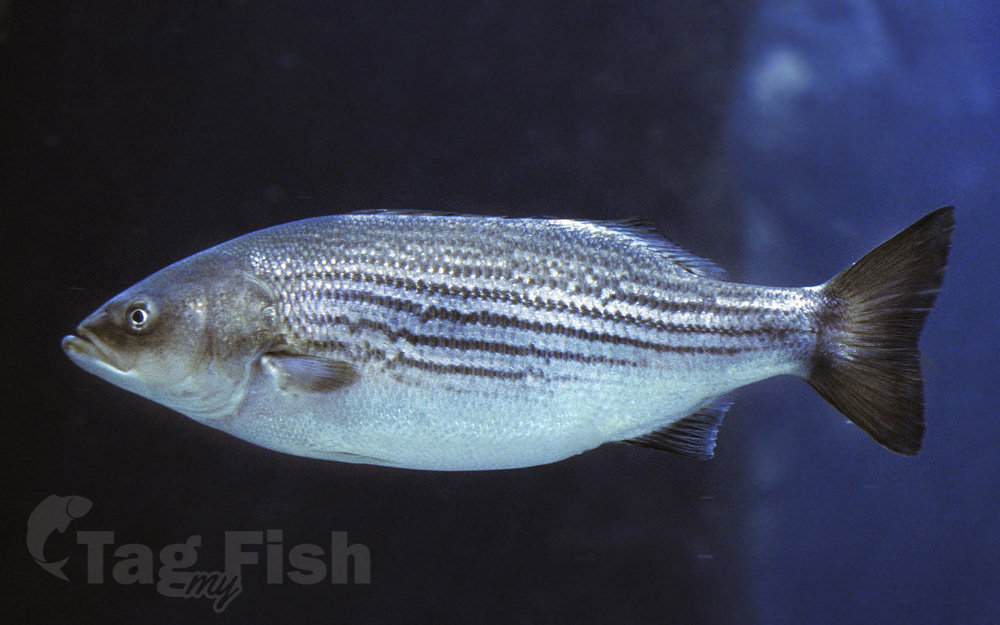
Classification
General data
The striped bass (Morone saxatilis), also called the Atlantic striped bass, striper, linesider, rock, or rockfish, is an anadromous perciform fish of the family Moronidae found primarily along the Atlantic coast of North America.
It has also been widely introduced into inland recreational fisheries across the United States. Striped bass found in the Gulf of Mexico are a separate strain referred to as Gulf Coast striped bass.
Morphology and lifespan
The striped bass is a typical member of the family Moronidae in shape, having a streamlined, silvery body marked with longitudinal dark stripes running from behind the gills to the base of the tail.
Common mature size is 20 to 40 pounds (9–18 kg). The largest specimen recorded was 124 pounds (56 kg), netted in 1896. The average size in length is 20 to 35 inches (50–90 cm) and approximately 5 to 20 pounds (2–9 kg).
Striped bass are believed to live for up to 30 years.
Natural distribution
Striped bass are native to the Atlantic coastline of North America from the St. Lawrence River into the Gulf of Mexico to Louisiana. They are anadromous fish that migrate between fresh and salt water. Spawning takes place in fresh water.
Introductions outside their natural range
Striped bass have been introduced to the Pacific Coast of North America and into many of the large reservoir impoundments across the United States by state game and fish commissions for the purposes of recreational fishing and as a predator to control populations of gizzard shad. These include: Elephant Butte Lake in New Mexico; Lake Ouachita, Lake Norman in North Carolina; Lake Norfork, Beaver Lake and Lake Hamilton in Arkansas; Lake Thunderbird in Illinois; Lake Pleasant, and Lake Havasu in Arizona; Lake Powell along the Arizona/Utah border; Castaic Lake, Pyramid Lake, Silverwood Lake, Diamond Valley Lake, and San Francisco Bay-Delta in California; Lewis Smith Lake in Alabama; Lake Cumberland in Kentucky; Lake George in Florida; Lake Murray in South Carolina; Lake Lanier in Georgia; Watts Bar Lake, in Tennessee; Lake Mead, Nevada; Lake Texoma in Oklahoma, Lake Tawakoni, Lake Whitney, Possum Kingdom Lake, and Lake Buchanan in Texas; Raystown Lake in Pennsylvania; Lake Wallenpaupack in Northeastern Pennsylvania; Umpqua River in Oregon and in Virginia Smith Mountain Lake and Leesville Reservoir.
Striped bass have also been introduced into waters in Ecuador, Iran, Latvia, Mexico, Russia, South Africa, and Turkey, primarily for sport fishing and aquaculture.
Environmental factors
The spawning success of striped bass has been studied in the San Francisco Bay-Delta water system, with a finding that high total dissolved solids (TDS) reduce spawning. At levels as low as 200 mg/l TDS, an observable diminution of spawning productivity occurs. They can be found in lakes, ponds, streams, and wetlands.
In the United States, the striped bass was designated as a protected game fish in 2007, and executive agencies were directed to use existing legal authorities to prohibit the sale of striped bass caught in federal waters in the Atlantic Ocean and Gulf of Mexico. In addition, Connecticut, Maine, New Jersey, New Hampshire, Pennsylvania, and South Carolina have designated striped bass as a game fish in state waters.
In Canada, the province of Quebec designated the striped bass population of the Saint Lawrence as extirpated in 1996. Analysis of available data implicated overfishing and dredging in the disappearance. In 2002, a reintroduction program was successful.
Striped bass spawn in freshwater, and although they have been successfully adapted to freshwater habitat, they naturally spend their adult lives in saltwater (i.e., they are anadromous).
Four important bodies of water with breeding stocks of striped bass are: Chesapeake Bay, Massachusetts Bay/Cape Cod, Hudson River, and Delaware River.
Many of the rivers and tributaries that emptied into the Atlantic, had at one time, bred stock of striped bass. This occurred until the 1860s. One of the largest breeding areas is the Chesapeake Bay, where populations from Chesapeake and Delaware bays have intermingled.
The very few successful spawning populations of freshwater striped bass include Lake Texoma, Lake Weiss (Coosa River), the Colorado River and its reservoirs downstream from and including Lake Powell, and the Arkansas River, as well as Lake Marion (South Carolina) that retained a landlocked breeding population when the dam was built; other freshwater fisheries must be restocked with hatchery-produced fish annually. Stocking of striped bass was discontinued at Lake Mead in 1973 once natural reproduction was verified.
Hybrids with other bass
Striped bass have also been hybridized with white bass to produce hybrid striped bass also known as wiper, whiterock bass, sunshine bass, palmetto bass, and Cherokee bass. These hybrids have been stocked in many freshwater areas across the US.
Fishing for striped bass
Striped bass are of significant value for sport fishing, and have been introduced to many waterways outside their natural range. A variety of angling methods are used, including trolling and surf casting with topwater lures a good pick for surf casting, as well as bait casting with live and dead bait. Striped bass take a number of live and fresh baits, including bunker, clams, eels, sandworms, herring, bloodworms, mackerel, shad, bluegills, worms, crayfish, bucktails jigs, and silver spoons.
The largest striped bass ever taken by angling was an 81.88 lb (37.14 kg) specimen taken from a boat in Long Island Sound, near the Outer Southwest Reef, off the coast of Westbrook, Connecticut.
Landlocked striped bass
Striped bass are anadromous, so their upriver spawning migrations led some individuals to become landlocked during lake dam constructions. The first area where this was documented was at the Santee-Cooper River during the construction of the two dams that impounded Lakes Moultrie and Marion, and because of this, the state game fish of South Carolina is the striped bass.
Recently, biologists came to believe that striped bass stayed in rivers for long periods of time, with some not returning to sea unless temperature changes forced migration. Once fishermen and biologists caught on to rising striped bass populations, many state natural resources departments started stocking striped bass in local lakes. Striped bass still continues to exhibit upstream migrations from freshwater lakes during the spawning period. Landlocked stripers have a hard time reproducing naturally, and one of the few and most successful rivers in which they have been documented reproducing successfully is the Coosa River in Alabama and Georgia.
A 70.6 lb (32.0 kg) landlocked bass was caught in February 2013 by James Bramlett on the Warrior River in Alabama, a current world record. This fish had a length of 44 inches (110 cm) and a girth of 37.75 inches (95.9 cm).
A self-sustaining population of striped bass also exist in Lake Texoma, a brackish lake.
In Canada there are no landlocked striped bass, but a large number of bass overwinter in Grand Lake, Nova Scotia. They migrate out in early April into the Shubenacadie River to spawn. These bass also spawn in the Stewiacke River (a tributary of the Shubenacadie). The Shubenacadie River system is one of five known spawning areas in Canada for striped bass, with the others being the St. Lawerence River, Miramichi River, Saint John River, Annapolis River, and Shubenacadie/Stewiacke Rivers.
